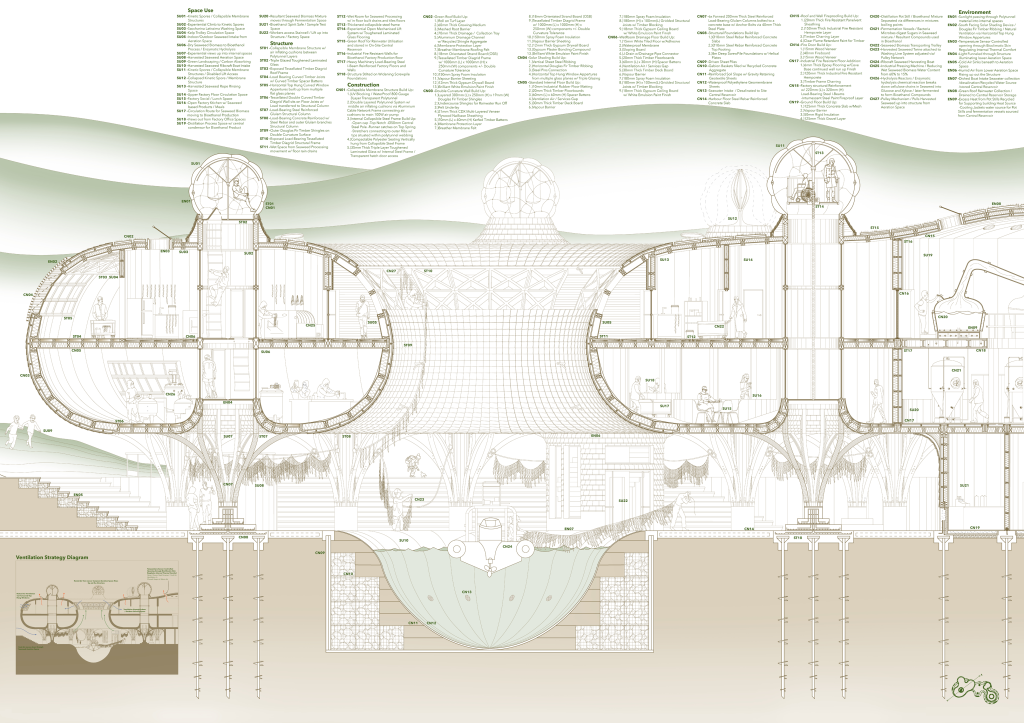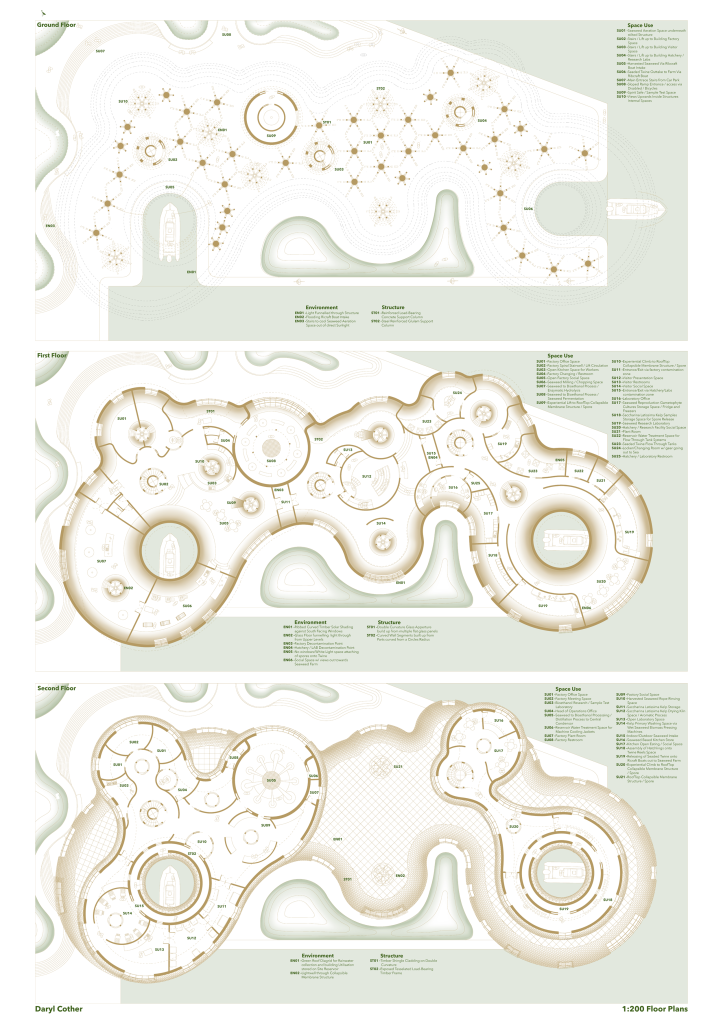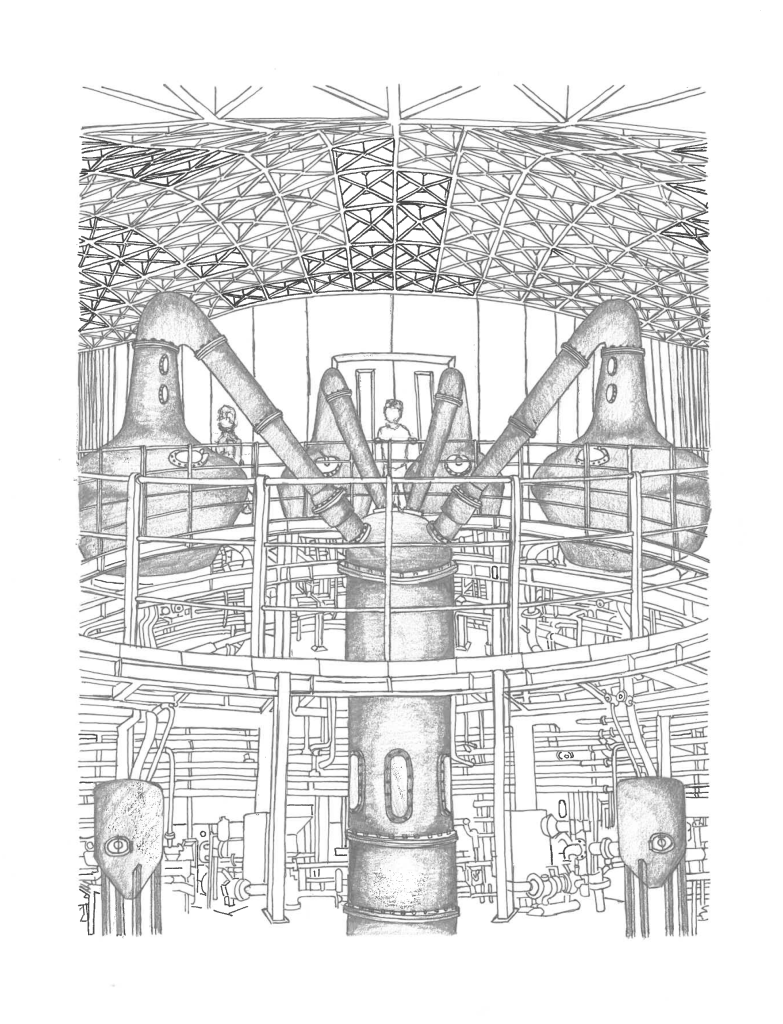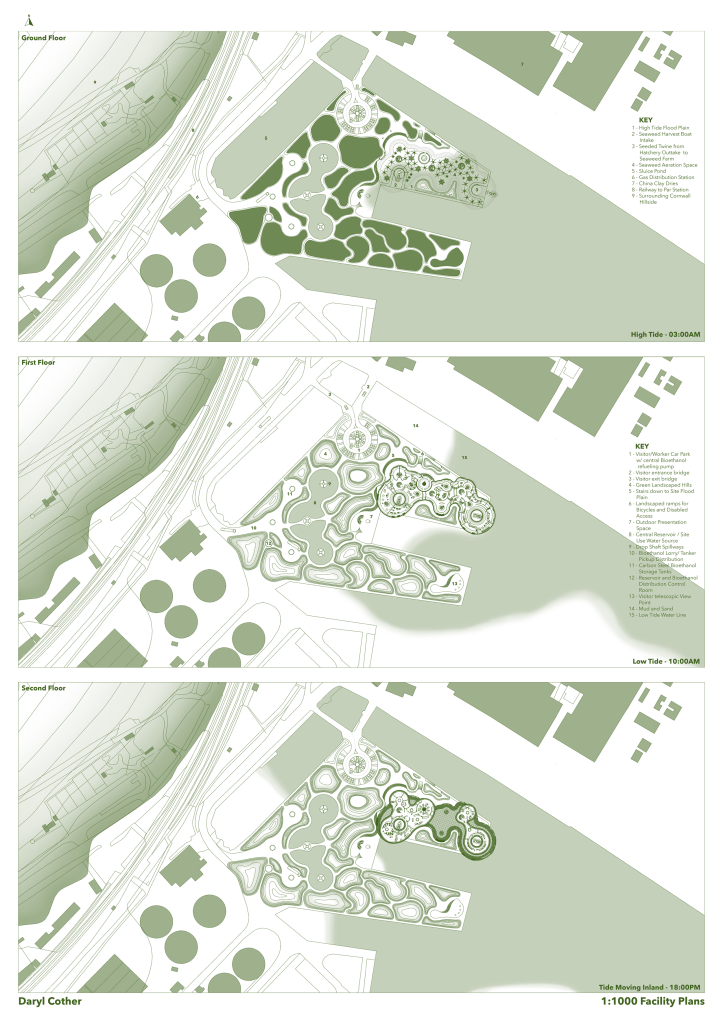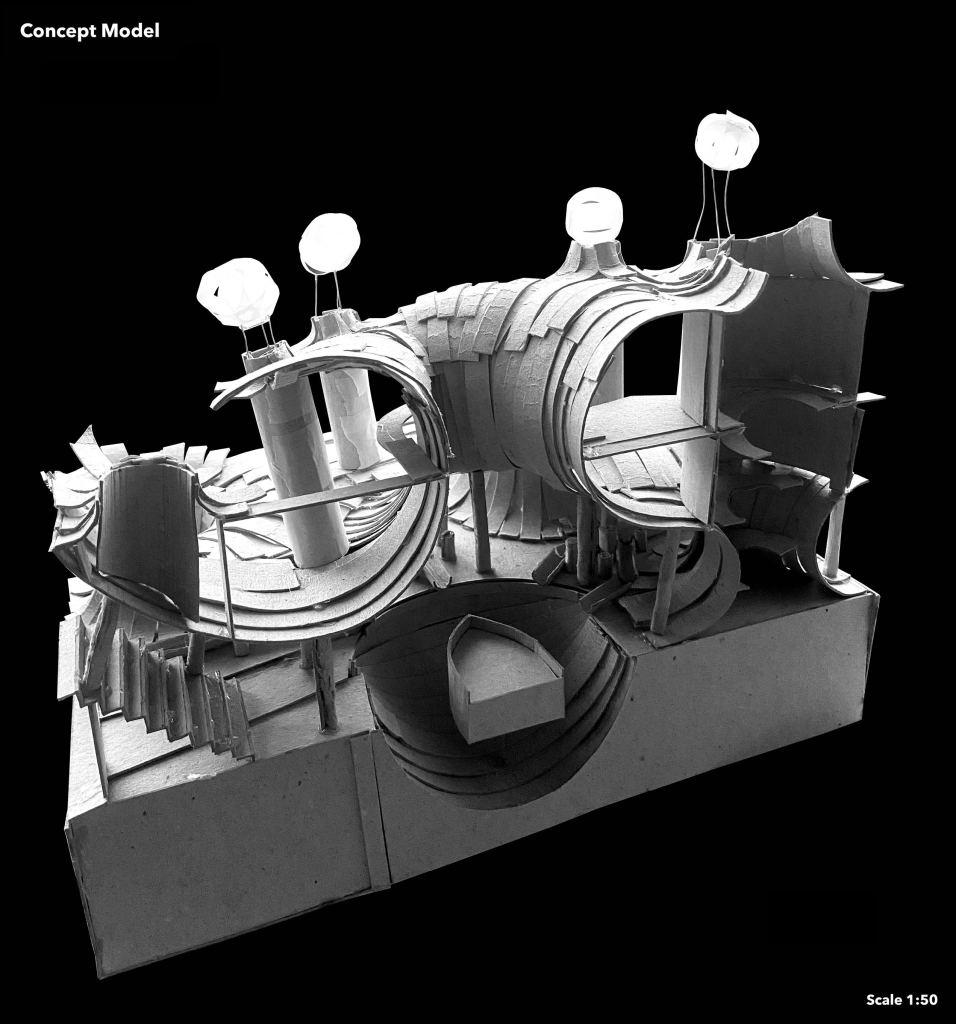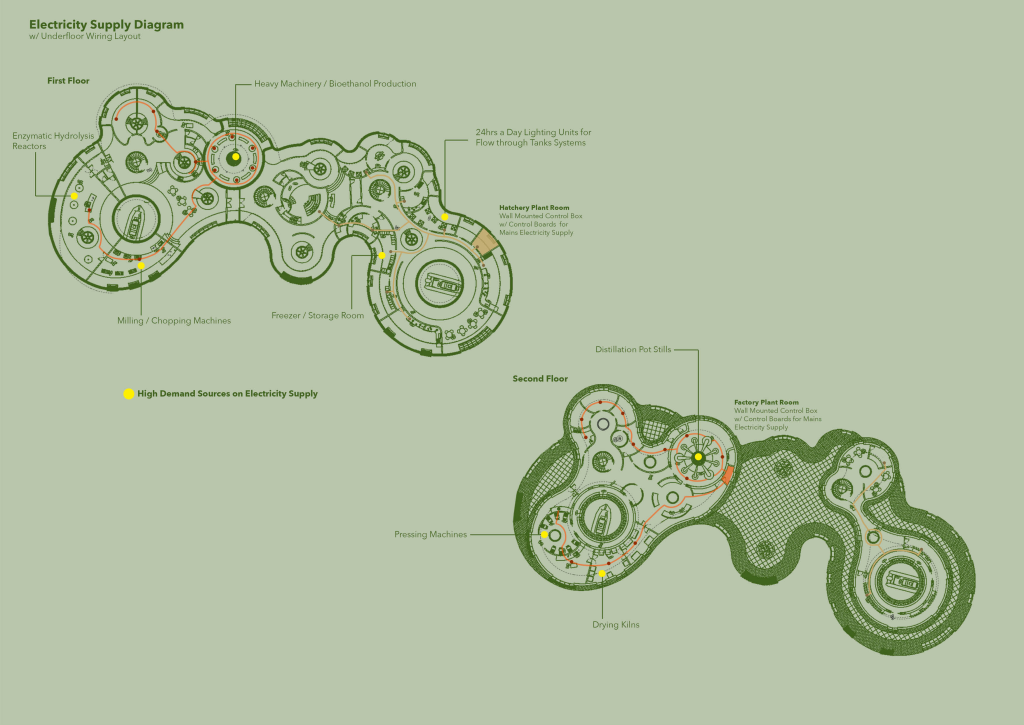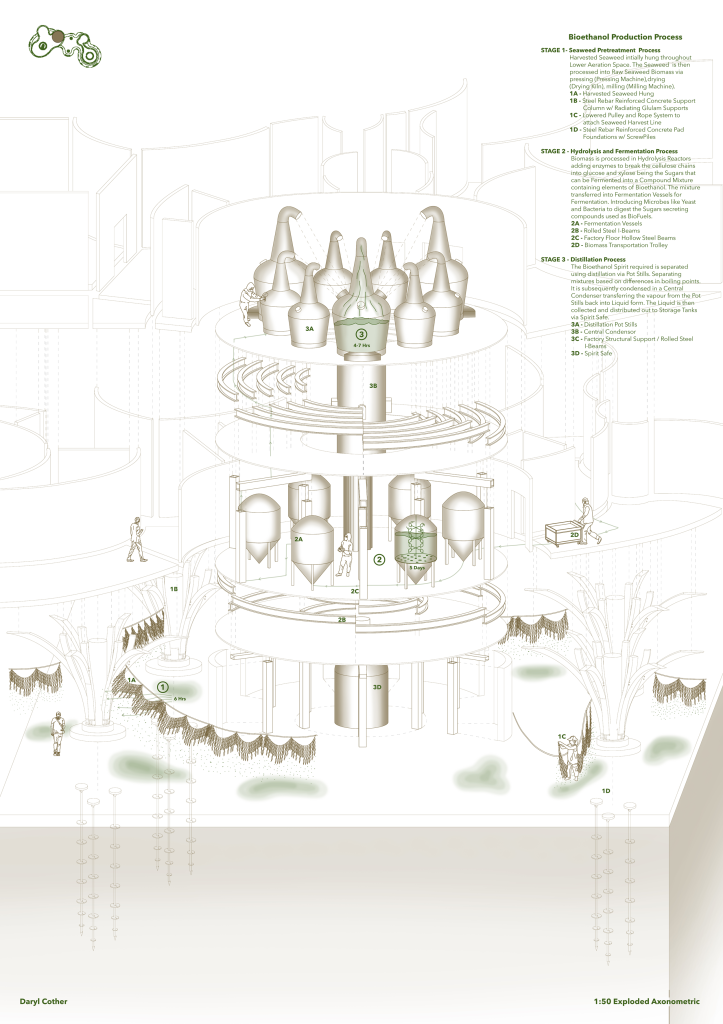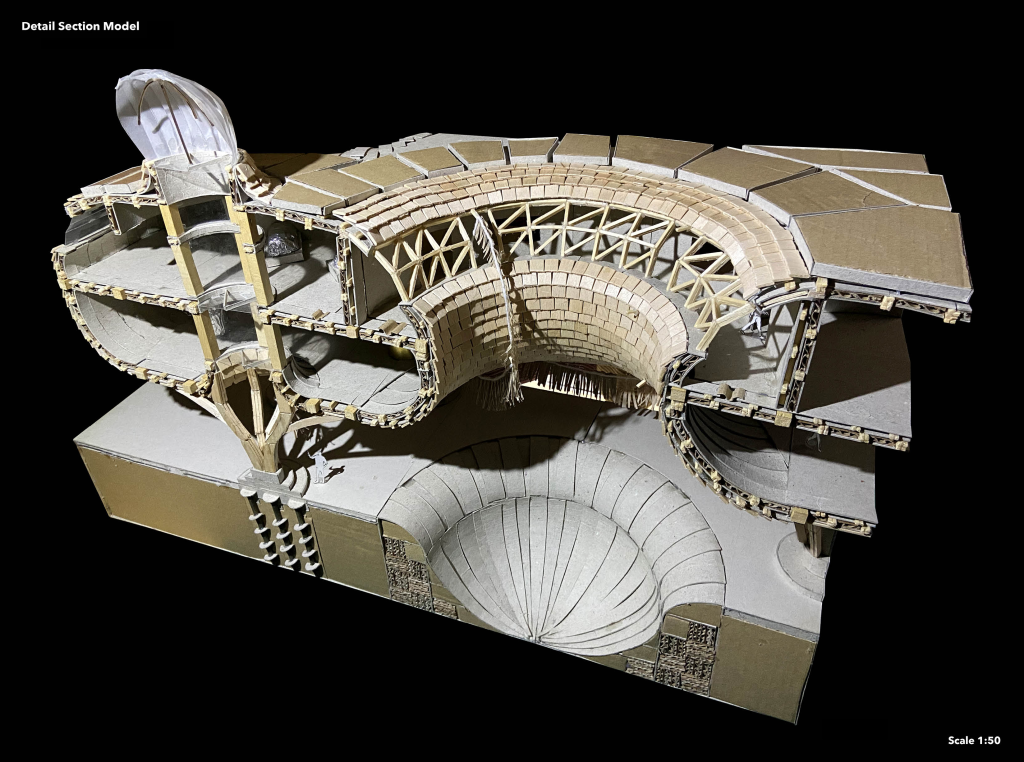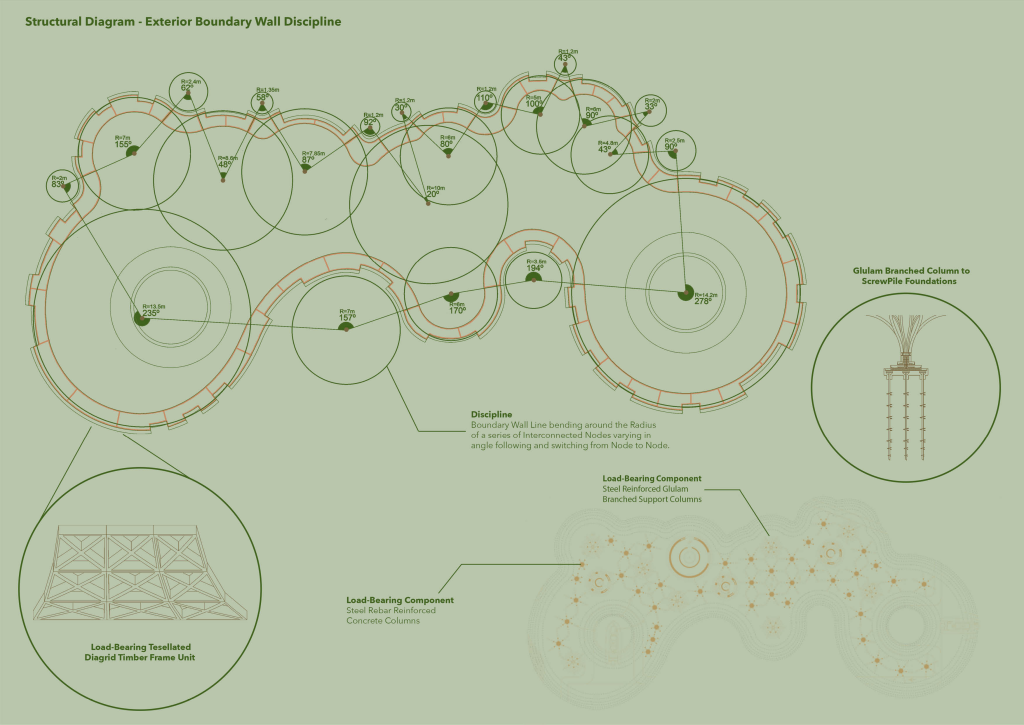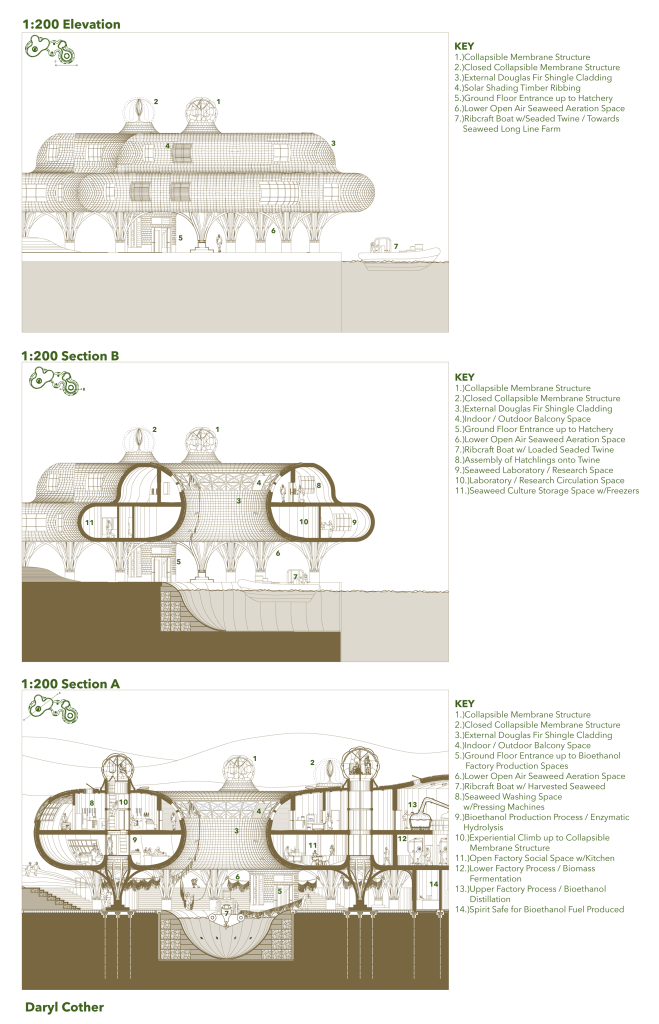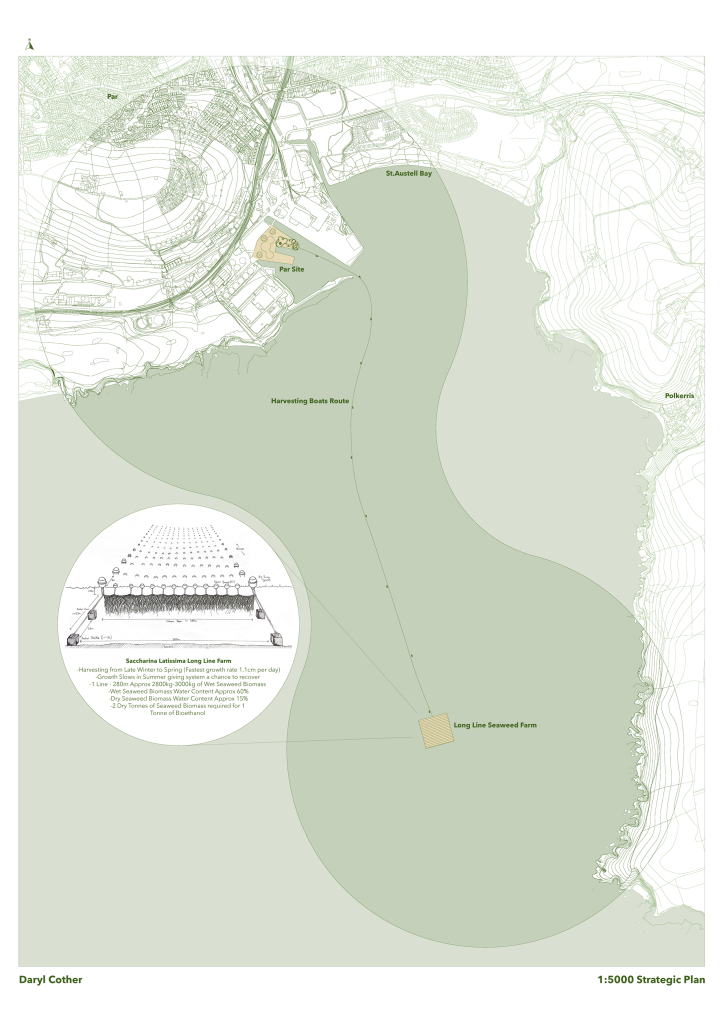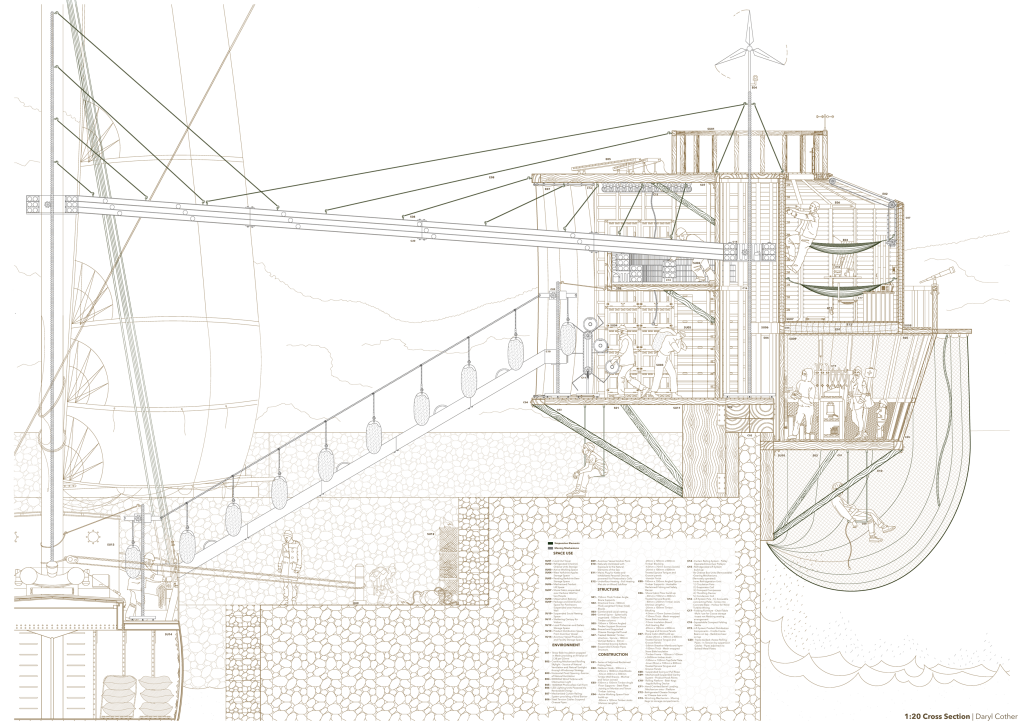Daryl Cother
Spore
Seaweed is a natural product with incredible properties that is starting to be utilised increasingly in today’s climate; with local offshore farms beginning to sprout up in Cornwall, the Par Horticultural Seaweed Centre is both a processing plant for horticultural seaweed products and a community space for locals and tourists alike. While distributing these amazing products across the country it was also important to ensure that the project also gave back to the community, with spaces for events, a beautiful garden to enjoy and tourist attractions to experience; bringing people together in Cornwall and providing a new route for income in one of the most impoverished counties in England. Each “wing” of the dock represents the two areas of both ‘production’ and ‘community,’ combining in their use and processing of seaweed.
The design facilitates the growing and harvesting of a chosen Seaweed Species (Saccharina Latissima) to be used in the production of a chosen product (Bioethanol) based on Research.
The organic double curvature form reflecting geometric principles found in Seaweed, has been made possible through the use of a load-bearing tessellated timber diagrid frame, built in parts that bend off a circles radius forming the internal spaces within.
The roof mounted Spores inspired by the reproductive system used by Seaweed, add a kinetic element to the structure mimicking the releasing of spores from the Seaweed Body as they inflate.
These membrane structures can be collapsed and inflated when inhabited to offer views out to Sea from the Harbour. Functioning via an inner lightweight steel frame working in a similar fashion to an umbrella. The space becomes warm via external inflating cushions creating an air barrier between the outside and in.
The light tunnel beneath allows light from above the structure to reach lower areas required by the Aeration Space through toughened glass floors, but still keep the Seaweed out of Direct Sunlight so it can be of usable quality for the process of making Bioethanol. The structure sits on a system of Steel Reinforced Glulam support stilts, keeping the structure up off the ground floor which is located on a flood plain with a high risk of flooding.
E-mail: darylcother@outlook.com
Equilibrium
Introduced in the heart of Reading Town, Hogmanay, the Scottish celebration of New Years, brings a large infusion of culture and festivity to the local area. Cock-a-Leekie soup, being an integral cuisine of the Scottish, accompanies the festivities. The influx of Hogmanay culture, introduced by the arrival of the Soup Facility, will indulge Reading in a host of traditions that seek to bring people together to celebrate the New Year and the fresh start that follows midnight. On New Year’s Eve in Reading, the public are invited to join in the activities, including; farming the ingredients for the soup, trying the soup, setting Juniper branches alight at midnight, Ceilidh dancing, drinking homemade Gin, and the chance to watch as the chefs produce the soup from raw ingredients on site.
Cock a Leekie , Scotland, Timber, Homemade, Feathers, New years
The Shipping Industry is responsible for 940million tonnes of CO2 annually making Sailing Vessels like the Avontuur become a more desirable mode of transporting goods across Sea to combat emissions from the shipping industry.
For the first Phase of this Project the the task was to design a ‘pop up’ distribution point that can travel disassembled inside the sustainable Sailing Vessel known as the Avontuur. ‘Popping up’ on the quayside of the chosen Site (Clovelly, Bideford) to facilitate the unloading of Cargoes and message spreading about the nature and qualities of imported goods.
Choosing 4 Specific Cargoes (Beer, Cheese, Coffee, Apples) that are to be transported inside the vessel and distributed from the ‘Pop Up’ distribution structure, taking into account each Cargoes specific requirements for storage and transportation.


